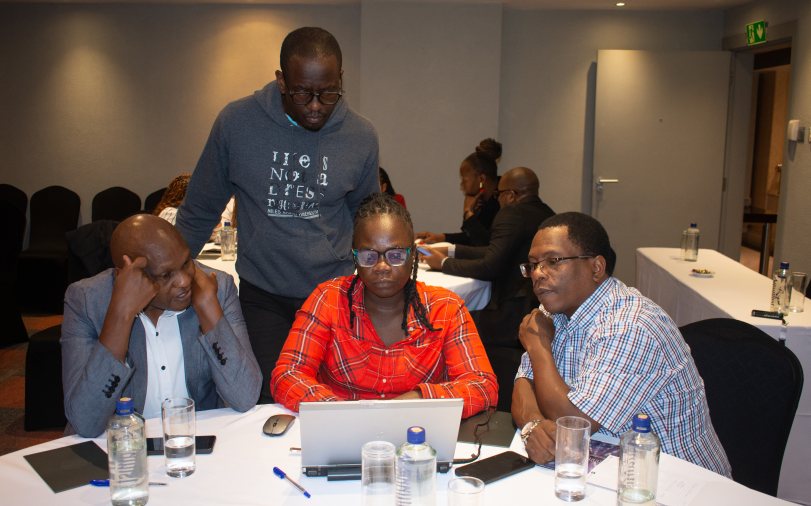

As Kenya’s capital strives to improve air quality, a new report evaluating the Nairobi City County Air Quality Action Plan (2019-2023) highlights both progress made and the challenges ahead.
The report, released by environmental stakeholders during a highly impactful four-day technical write-shop, reveals significant strides in policy implementation but warns that urgent action is still required to curb harmful pollution levels.
The write-shop, organized by the Environmental Compliance Institute with support from the Clean Air Fund under the Breathe Cities Initiative, brought together key stakeholders, including government officials, academia, development partners, scientists, and community representatives.
The goal was to collaboratively develop a zero draft of the Nairobi City County Air Quality Action Plan 2025–2029—a roadmap for cleaner air and healthier communities in Nairobi.
“This plan builds on the successes and lessons from the 2019–2023 plan, with a renewed focus on sustainable air quality management and capacity building for Nairobi City County Government officials," Maurice Kavai, Deputy Director of Climate Change and Air Quality Monitoring, noted as he officially opened the event.
In his welcoming remarks, Dr Victor Indasi, Breathe Cities Nairobi Lead, encouraged participants to actively engage in mapping out strategies and contributing their best efforts during the write-shop, emphasizing that their work would determine the future of air quality planning in Nairobi.
Dr. Godwin Opinde, Air Quality Technical Lead, provided an overview of the Nairobi City County Air Quality Action Plan (2019-2023) and presented the Stock-take Report.
He highlighted the progress made over the last four years, including the expansion of air quality monitoring networks, improved policy frameworks, and public engagement initiatives.
However, he also pointed out key gaps, such as weak enforcement mechanisms and the continued challenge of emissions from transport and industrial sources.
Gerphas Opondo, the Executive Director of the Environmental Compliance Institute, gave a briefing on the Nairobi City County Air Quality Action Planning Project (2025-2029).
He took the opportunity to reflect on the long journey in developing the first air quality action plan for Nairobi, which was spearheaded under his leadership.
He emphasized the importance of learning from past experiences and ensuring that the new plan incorporates stronger enforcement measures and sustainable solutions.

Key achievements
The stock-take report outlines major milestones achieved under the action plan.
These include the establishment of air quality monitoring stations, regulatory frameworks for emissions control, and increased public awareness of pollution’s impact on health.
Nairobi’s county government has also engaged stakeholders to promote clean energy alternatives, particularly in transportation and industry.
One notable achievement is the installation of reference air quality monitors across different parts of the city, providing real-time data on pollution levels.
This has strengthened the city’s ability to track air quality trends and inform policy decisions.
Challenges persist
Despite these successes, the report highlights persistent obstacles. Unregulated vehicle emissions, industrial pollution, and open waste burning continue to contribute to Nairobi’s poor air quality.
Rapid urbanization has further strained the city’s capacity to manage environmental health risks.
Stakeholders emphasize the need for stronger enforcement of existing air quality laws.
While policies exist, their implementation remains inconsistent due to inadequate funding, limited technical expertise, and institutional challenges.

Health implications
The report warns that air pollution remains a silent killer, particularly affecting children, the elderly, and those with respiratory conditions.
Studies link high levels of pollutants to increased cases of asthma, bronchitis, and other respiratory diseases. Health experts call for immediate interventions to protect vulnerable populations.
The way forward
To accelerate progress, the report recommends enhanced collaboration between national and county governments, investment in green infrastructure, and stricter regulation of emissions from transport and industries.
Additionally, integrating air quality considerations into urban planning is seen as a crucial step toward sustainable development.
As Nairobi reflects on the progress made, environmental advocates urge continued commitment to cleaner air.
With rising awareness and strategic interventions, the city has the potential to set a precedent for other urban centers in Africa facing similar challenges.
Dr Jackline Lidubwi is an Air Quality Communication Expert, Journalist and a Media Trainer










